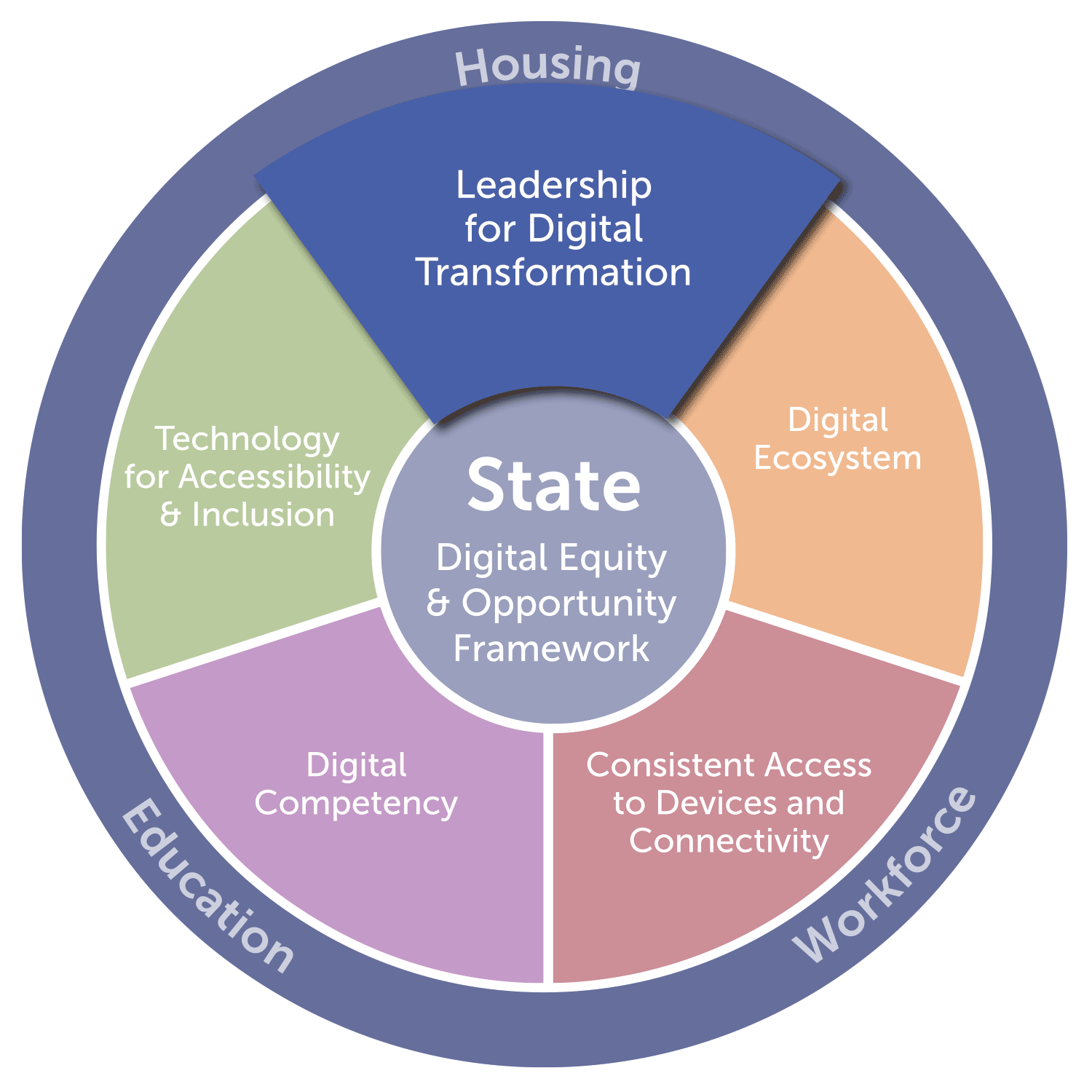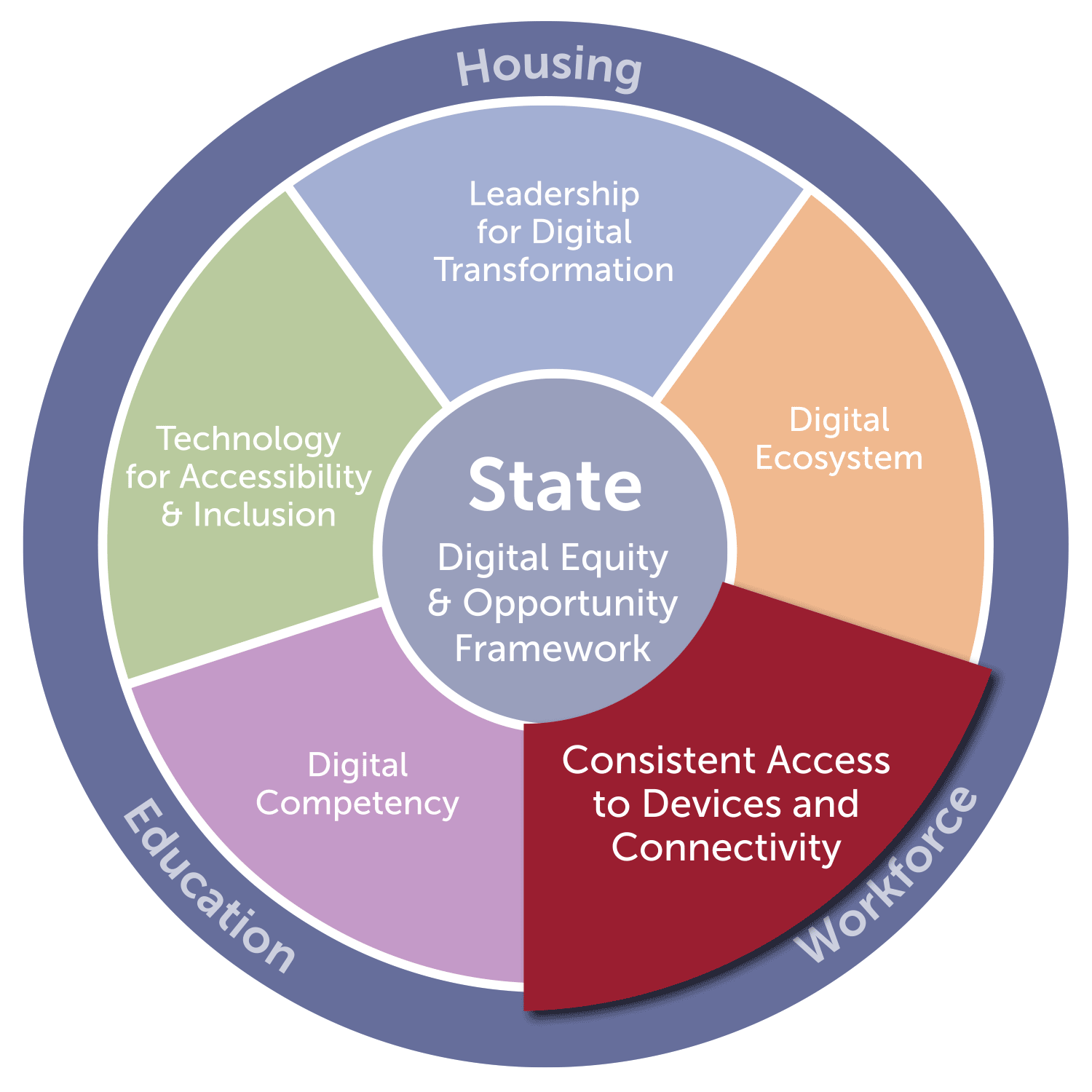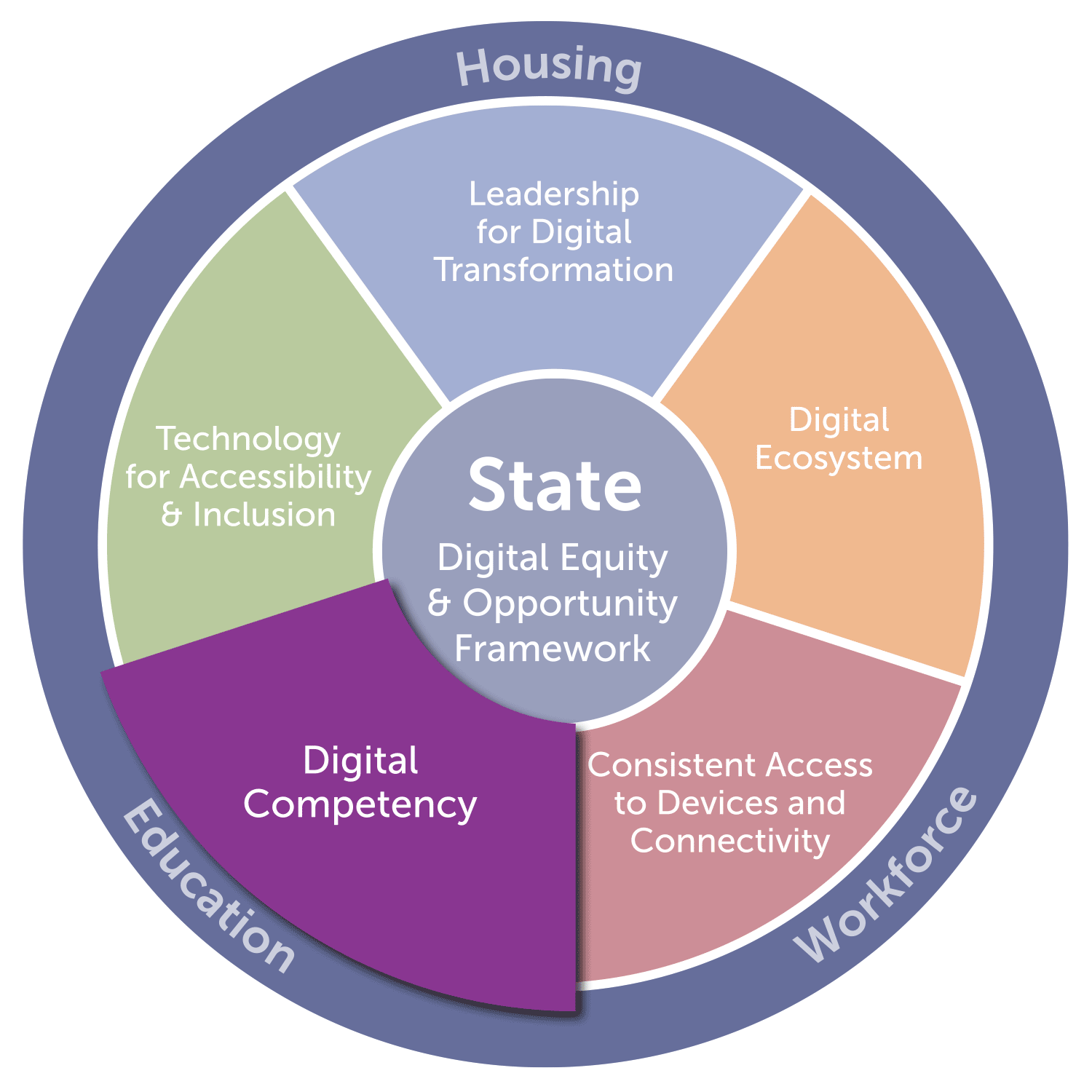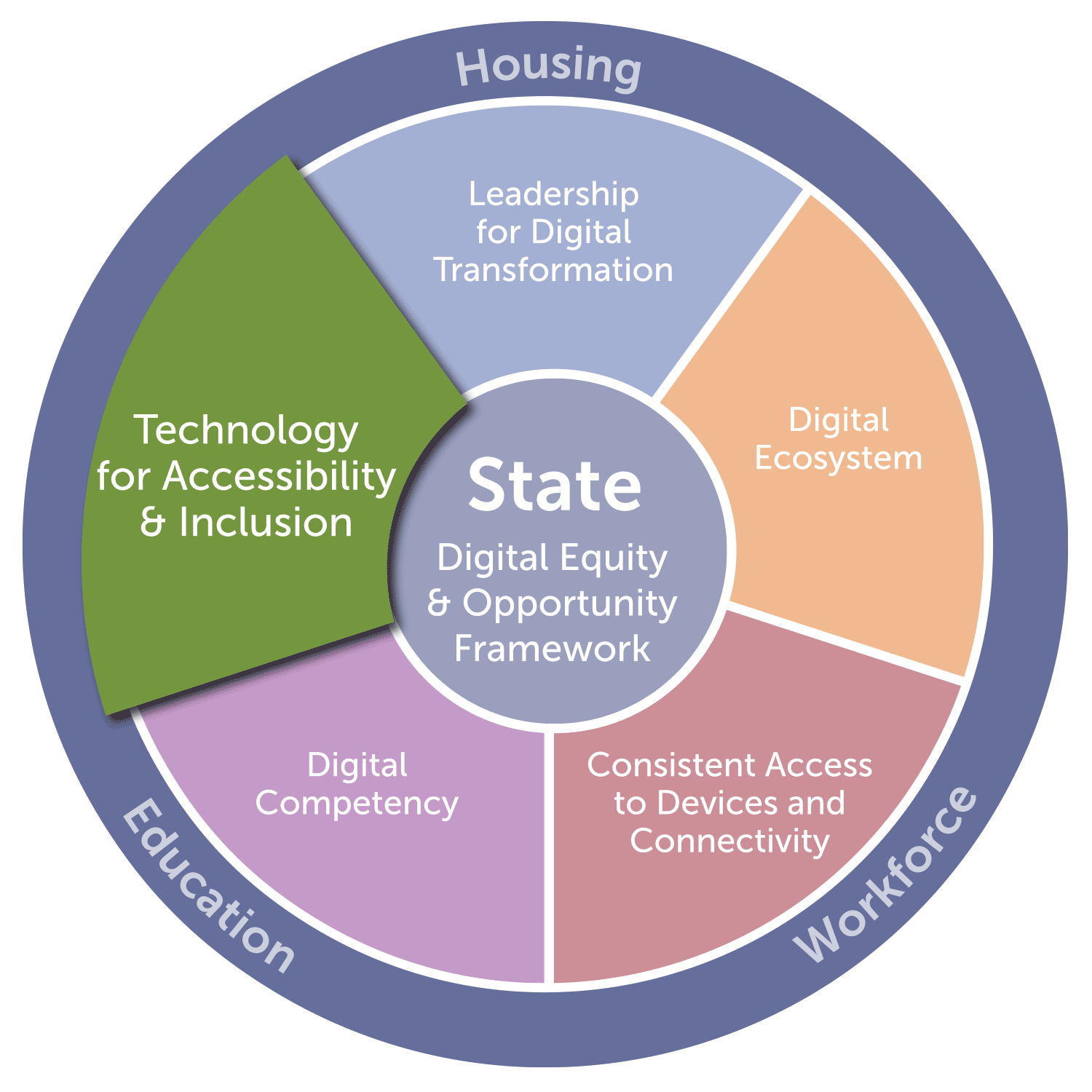The State Digital Equity and Opportunity Framework sets the enabling conditions for equitable access, use, and workforce readiness for all people in an increasingly digital society.
What sets the framework apart from other guidance is its holistic approach, placing the learner at the center of policies originating from three economic sectors: Education, Housing, and Workforce, with a focus on historically and systematically excluded communities, as well as citizens with learning variability. The formation of committees of representatives from various agencies, community-based organizations (CBOs), and private entities that represent the state’s diversity is crucial for implementing this framework.
The framework is structured around three primary sectors: Education, Housing, and Workforce. These Sectors are broad categories that include various programs and institutions that play a crucial role in influencing learners’ access to necessary resources, opportunities, and support systems.
By organizing the framework into these sectors, we ensure a comprehensive approach to addressing the diverse needs and challenges that learners face in their educational and professional journeys. Each sector focuses on specific areas essential for holistic development and equitable access to opportunities.
Furthermore, the objectives under each sector are categorized into five domains:
 Leadership for Digital Transformation
Leadership for Digital TransformationLeadership for Digital Transformation refers to the strategic and inclusive guidance provided by state, territory, and community leaders to enact a vision for equitable access to digital resources and opportunities. This includes ensuring the comprehensiveness of state digital equity plans, setting accountability measures for technology integration, and forming relevant collaborations to assess and update strategies to address the technology needs of all learners at all levels.
 Digital Ecosystem
Digital EcosystemThe Digital Ecosystem domain provides guidance on the interconnected infrastructure, policies, and resources necessary to achieve digital equity. It involves integrating support systems, sustainable funding models, and public-private partnerships to provide robust broadband access, digital literacy training, and applications that promote self-sufficiency and collaboration needed to fully benefit from digital advancements.
 Consistent Access to Devices and Connectivity
Consistent Access to Devices and ConnectivityThe Consistent Access to Devices and Connectivity domain ensures that all individuals, especially learners in K-12 and higher education, have adequate and consistent access to high-speed internet, devices, and emerging technologies and learning tools. This includes statewide device distribution programs, maintenance protocols, and funding for maintaining and upgrading devices and internet infrastructure to support continuous learning and development.
 Digital Competency
Digital CompetencyDigital Competency refers to the development of digital skills, mindsets, dispositions, and behaviors essential for all people to effectively use technology to fully participate in a digitally driven society. These competencies enable individuals to lead, educate, learn, navigate, communicate, and utilize current and emerging technologies in various aspects of their personal, academic, and professional lives. It includes developing statewide digital competency standards, integrating technology into all aspects of the educational landscape, and providing digital citizenship education to empower learners to use technology responsibly and creatively for social and economic advancement.
 Accessible Technology for Accessibility and Inclusion
Accessible Technology for Accessibility and InclusionThe Accessible Technology for Accessibility and Inclusion domain provides guidance on the accessibility of digital tools, devices, and the web to support the varying needs of learners with diverse abilities and disabilities. This includes creating inclusive environments by ensuring navigable and usable digital resources such as accessible website navigation, screen readers, speech-to-text software, magnification tools, voice command, and other specialized tools. Additionally, it includes establishing funding mechanisms to ensure the continuous provision and maintenance of these technologies to improve educational, social, and economic outcomes for all learners.
Each domain contains objectives, which are recommendations for statewide policies and initiatives with requirements that can be executed by qualifying vendors or agency personnel, and metrics that serve as evaluation guidance for committees to use in assessing the successful implementation of those objectives.
The State Digital Equity and Opportunity Framework offers a centralized approach to digital equity objectives to complement existing state broadband efforts. The infusion of funds during and after the COVID-19 pandemic has made this an opportune time for states and territories to make strides toward digital equity. While states’ Broadband Development Offices (BDOs) leveraged the $42.45 billion in Broadband Equity, Access, and Deployment (BEAD) funds for infrastructure projects, additional funds, such as the $10 billion Capital Projects Fund (CPF) and the $5.12 billion United States Department of Agriculture ReConnect program, were deployed and already in use to address the digital divide (ReConnect Loan and Grant Program, USDA, 2022).
To complement the broadband equity initiatives and following the $60 million State Digital Equity Planning Grant Program are the $1.44 billion State Digital Equity Capacity Grant Program and the $1.25 billion Digital Equity Competitive Grant Program. Both of these programs have a five-year life cycle and present an excellent opportunity for states to leverage our framework.
The State Digital Equity and Opportunity Framework will be most useful for:
As states continue to leverage federal funds and address their unique digital equity and opportunity gaps, this framework serves as a critical guide to an inclusive digital future for all people.
Domains:
In this context, a domain is used to categorize and focus efforts on a set of related objectives. Each domain serves to organize and address distinct aspects of a larger initiative or program.
Sector:
In the context of this framework, a sector is a broad category within the economy that encompasses programs and institutions impacting learners’ access to resources, opportunities, and support systems. The key sectors in this framework are Education, Workforce, and Housing.
Objectives:
Objectives refer to the state-level goals that need to be met in order to achieve digital equity and opportunities for learners at all levels.
Requirements:
Requirements refer to the criteria that vendors or staff must meet to be considered for implementing the initiatives. These standards ensure that the vendor or staff has the necessary experience, expertise, and capabilities.